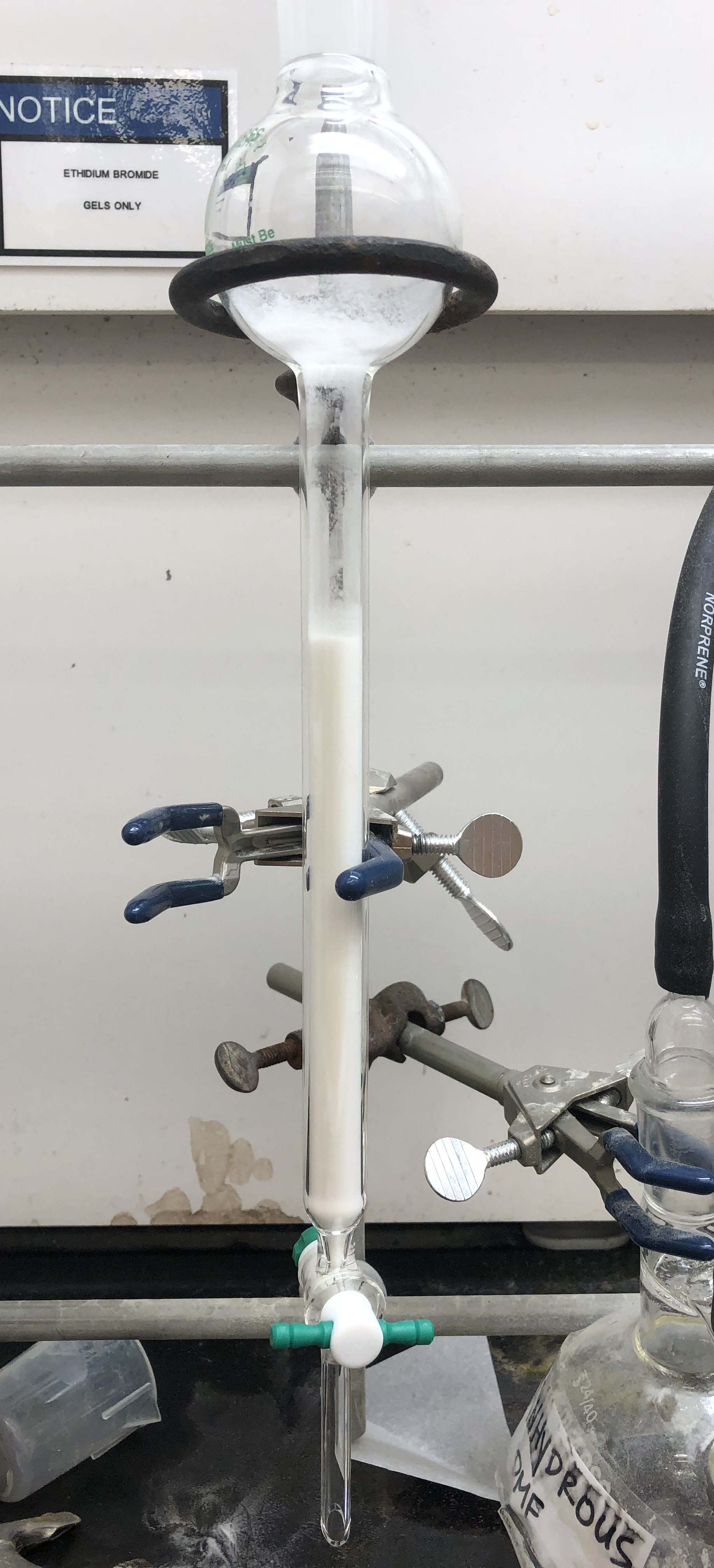Have you ever taken a common medicine, such as Tylenol, and wonder where it comes from? Or have you ever encountered a nylon-fabric material such as a T-shirt or an umbrella, and think of how it’s made? The answer lies in chemical synthesis.
In fact, we live in a world of synthetic materials–many substances important to our daily lives are obtained because of chemical synthesis. Chemists create ways to synthesize complex compounds from naturally occurring, simpler materials. This allows chemists to better understand the structures of a compound and enables them to produce these products in large quantities. Chemical synthesis involves breaking and forming bonds between elements of a compound and is usually composed of several numbers of small reactions and workups as the starting material is converted to the desired product.
Reactions
Synthesis reactions contain multiple reactants and form a product. For example, in my project, one of the reactions I perform is an imine formation. In this reaction, I combine an aldehyde and an amino group to form an imine; in the process, water is lost. After the reaction is complete, the next step is to workup the reaction to isolate the product.
Rotary evaporator
A rotary evaporator is often used in the workup process of a reaction. It is a device that includes a vacuum system, a motor rotator, a heat bath, a condenser, and a condensation-collecting flask, which is used to remove the solvents from the product through evaporation. The vacuum can lower the pressure inside the sample flask, which lowers the boiling points of the solvent in the sample, allowing effective evaporation of the solvent to give the desired product. Rotary evaporation is most often and conveniently applied to separate “low boiling” solvents such a n-hexane or ethyl acetate from compounds which are solid at room temperature and pressure.

Extraction
Extraction is a useful and simple method for separating the desired product when there are multiple compounds in the sample. The workup is usually carried out in a separatory funnel. The sample mixture is combined with a solvent that can dissolve the product but not the impurities, as well as water. This gives two layers in the separatory funnel (sort of like a vinaigrette salad dressing), usually with the organic solvent on the top and the water on the bottom. To obtain the desired product, the water layer is drained out and the organic layer containing the product is kept. An extraction is usually followed by using a rotary evaporator mentioned above to remove the organic solvent.

Purification/ Column Chromatography
What happens when the desired product is mixed with other substances that are also soluble in the same solvent? Purification using column chromatography is the answer. It is a technique used to isolate the desired product from a mixture. The column usually contains two phases: a mixture of solvents that carry the molecules as the mobile phase and silica gel as the stationary phase. Silica gel allows for separation of the mixture of compounds by polarity and it will take different amounts of time for each compound to move through the silica gel. Although sometimes it takes a while, you just have to wait for your desired product to make its way all the way down the column.

Over this summer, I have been trying to synthesize a number of compounds using these three workup methods. Chemical synthesis is a large field, and there are tons of reactions and workup methods required in the process. So, the next time you take a Tylenol pill, be thankful for the chemical synthesis that lead to the production of your medicine, and the fact that your headache will soon be gone!
Lucy Zhou 2021

Recent Comments